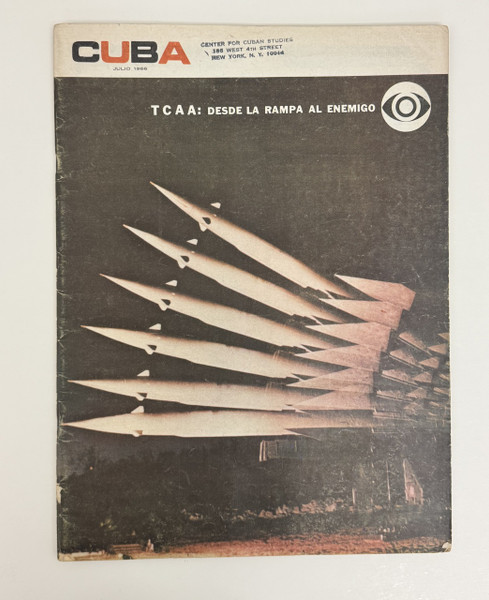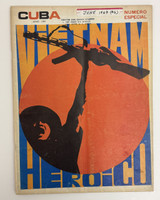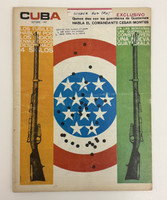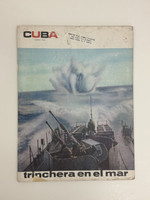- Travel
-
Exhibits
- New Works
- La Portada Cubana
- Immortal Cuba: Artists Take on Their Heroes
- Seattle Poster Exhibit
- Sandra Dooley & Alejandrina Cué
- The Art of Wayacón
- Cuban Folk Art
- Cuba In Black And White
- 25 Years of Cuban Art Space
- Summer Folk Art Expo
- ¡SPRING AWAKENING FROM CUBA!
- Celebrating The Art Of Cuban Women
- Celebrating Paper, Affordable Art from Cuba
- Art of the Revolution
- Outsider Art
- Lost and Found
- En la lucha: Celebrating Cuban Women and Their Art
- Cuban Art Stash
- 100 Fires: 5 Cienfuegos Artists' Work on Paper
- Waya + Monte! Magic Realism in Cienfuegos
- Viva Cuba Viva! Poster Show
- Cultivando Sueños
- Black Lives Matter in Cuba Jan 9-March 27
- Leandro Soto: Crónicas visuales
- Cuban Canvas
-
Archive
- Global Reflection 2018: Spirit and Community
- Exhibit in the cloud: Contemporary Works on Paper
- MADE IN CUBA! MINNEAPOLIS EXHIBIT
- Cuban Posters and Photography from CCS collection
- AUTUMN SALE! Sept/Oct 2017
- SPRING ARTS AND CRAFT SALE
- Vuelo Directo/Non Stop: Alberto & Alejandro Lescay
- The Many Faces of Fidel
- Somos
- Made in Cuba!
- The US empire in Cuban graphics
- Made in Cuba/Seattle exhibit
- Entre Nos
- Looking Back
- Cuban Art Space
- Membership/Donate
- About Us
- Cuba News
-
CUBA - Revista Mensual was a monthly magazine published from Havana serving as a vital communication channel for revolutionary Cuba to reach international audiences during the 1960s. This July 1966 issue features a stark, dramatic cover photograph of Soviet-made anti-aircraft missiles arranged in diagonal formation against a dark background, with the headline "TCAA: desde la rampa al enemigo" (Anti-Aircraft Artillery: From the Launch Ramp to the Enemy), emphasizing Cuba's military preparedness in the face of continued U.S. hostility.
The cover's militaristic imagery reflects the tense Cold War context of 1966, just four years after the Cuban Missile Crisis, when Cuba remained under constant threat of U.S. invasion and conducted regular military readiness exercises. The CBS eye logo in the upper right corner suggests this may be addressing or responding to U.S. media coverage of Cuban defense capabilities.
The interior features a striking contrast in tone with a whimsical, colorful illustration showing a figure in a hot air balloon basket suspended by a chain, with large colorful spheres (purple, orange, blue, and pink) floating alongside. The playful artwork accompanies text about everything from "Icaro al avión" (Icarus to the airplane) to "el caza supersónico" (the supersonic fighter) to "las 'cuatro bocas'" (the "four mouths") to "el cohete antiaéreo" (the anti-aircraft rocket), suggesting an article on the history of flight and aerial warfare.
A major feature titled "EXCLUSIVO 26" commemorates the 13th anniversary of the Moncada Barracks assault on July 26, 1953, the foundational event of the Cuban Revolution. The text recalls how "13 years ago, the walls of Moncada, fortress against a people, heard shouts of rebellion. After, a sinister repression that did not stop before the wounded. And, like now, the slander and the lie: 'The revolutionaries opened with knives the bellies of the hospital sick,' 'Dead Fidel Castro,' and in the process the voice of Fidel Castro: 'I do not fear the fury of the miserable tyrant who tore out life from 70 of my brothers. Condemn me, it does not matter, history will absolve me.'"
Additional features include a profile of Farah María, described as a singer, dancer, and model who is not interested in literature or painting but loves music, especially Chopin and jazz. The "sobre abierto" (open envelope) section presents reader letters responding to the magazine's coverage, demonstrating CUBA - Revista Mensual's role in fostering dialogue between Cuban voices and international readers during a period of intense isolation and propaganda warfare.
Published at the height of U.S.-Cuban tensions and the Vietnam War, this issue reflects how revolutionary Cuba used international publications to counter U.S. narratives, showcase military strength, commemorate revolutionary history, and present a multifaceted image of Cuban society combining defense readiness with cultural development.
-
-
Discover More at the Center for Cuban Studies







